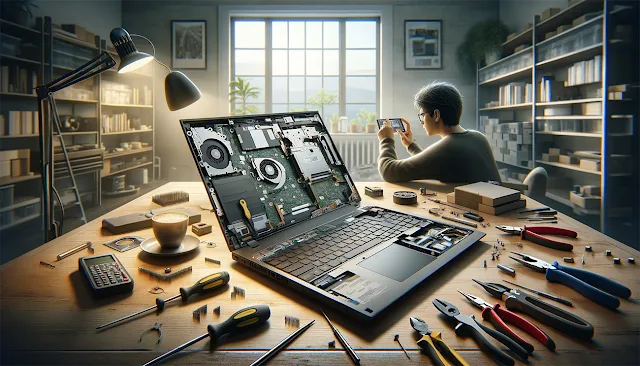A Beginner's Guide to Laptop Repair: Tips and Tricks for Troubleshooting Common Issues
Laptops have become an essential part of our daily lives, serving as indispensable tools for work, communication, entertainment, and more. However, like any electronic device, laptops are prone to malfunctions and breakdowns over time. Fortunately, many common laptop issues can be resolved with a little know-how and troubleshooting. In this beginner's guide to laptop repair, we'll explore some simple tips and tricks for diagnosing and fixing common laptop problems, helping you keep your device running smoothly and efficiently.
When it comes to laptop repair, one of the most important things to remember is safety first. Before attempting any repairs or troubleshooting, always ensure that the laptop is powered off and unplugged from the power source. This will prevent the risk of electric shock or damage to the internal components. Additionally, it's a good idea to ground yourself by touching a metal object or wearing an anti-static wrist strap to prevent static electricity from damaging sensitive electronic components.
One of the most common issues that laptop users encounter is a slow or sluggish performance. This can be caused by a variety of factors, including a lack of available memory, excessive background processes, or a build-up of dust and debris inside the laptop. To address this issue, start by closing any unnecessary programs and performing a virus scan to check for malware or other malicious software. Additionally, consider upgrading the laptop's memory or installing a solid-state drive (SSD) for improved performance and faster boot times.
Another common problem that laptop users may encounter is a malfunctioning keyboard or touchpad. This can be caused by physical damage, liquid spills, or software-related issues. If the keyboard or touchpad is unresponsive, try restarting the laptop to see if that resolves the issue. If not, check the device manager in the laptop's settings to ensure that the keyboard and touchpad drivers are up-to-date. If the problem persists, consider replacing the keyboard or touchpad with a new one.
Overheating is another common issue that can affect the performance and longevity of a laptop. Excessive heat buildup can lead to system instability, component failure, and reduced battery life. To prevent overheating, make sure that the laptop is placed on a flat, hard surface that allows for adequate airflow. Additionally, regularly clean the laptop's air vents and cooling fans to remove dust and debris buildup. Consider investing in a laptop cooling pad or stand to help dissipate heat more effectively.
Laptop screens are susceptible to damage from drops, impacts, and pressure. If you find that your laptop screen is cracked, flickering, or displaying abnormal colours, it may be time to replace the screen. Before attempting to replace the screen yourself, however, check if the laptop is still under warranty, as screen replacement may be covered. If not, you can purchase a replacement screen online and follow step-by-step guides or tutorials to install it yourself.
Battery issues are another common concern for laptop users, particularly as the laptop ages. If you find that your laptop battery is not holding a charge or is draining quickly, it may be time to replace the battery. Before purchasing a new battery, try recalibrating the battery by fully charging it and then allowing it to discharge completely before recharging. If this doesn't resolve the issue, consider replacing the battery with a new one to restore your laptop's battery life and performance.
In conclusion, while laptops are invaluable tools for modern living, they are not immune to problems and malfunctions. By following these simple tips and tricks for laptop repair, you can troubleshoot common issues and keep your device running smoothly and efficiently. Whether it's addressing slow performance, malfunctioning hardware, or battery issues, a little know-how and patience can go a long way in maintaining and repairing your laptop. So the next time you encounter a problem with your laptop, don't panic – with the right tools and techniques, you can tackle it like a pro and get back to work, gaming, or browsing in no time.

